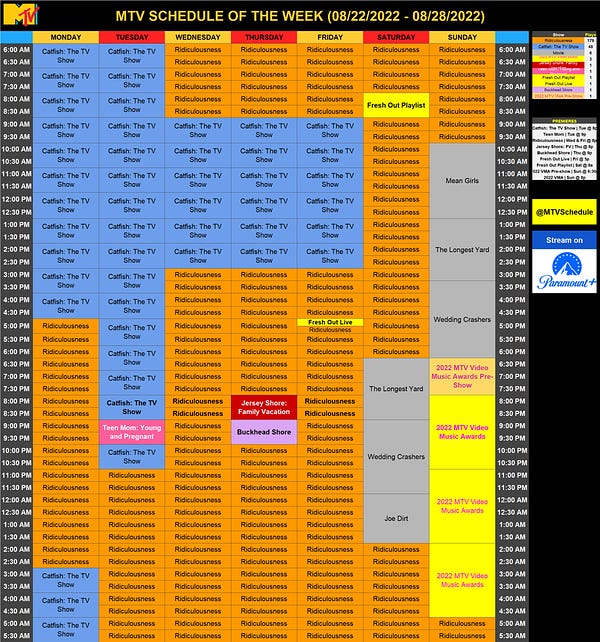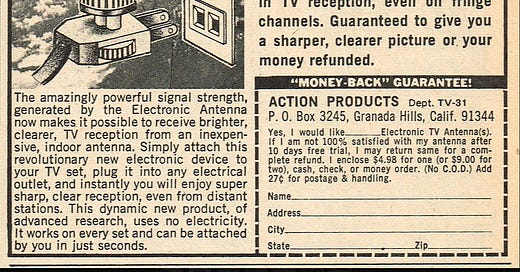I keep thinking about what has to be the media quote of the summer.
“We're big believers in the linear business,” said noted Batgirl fanboy David Zaslav.
This is the kind of out-of-touch-sounding remark that might get some executives fired at another company in this digital transformation era. But Mr. Zaslav is on a mission to make Wall Street happy, and seemingly this kind of old school talk is music to their ears?
It sure doesn’t jive with all the recent headlines about CTV explosions and Streaming Wars. And it didn’t sound any better when Nielsen reported that for the first time ever, more people spent time streaming than watching cable TV last month.
Just after those numbers came out, The Wall Street Journal reported that NBCUniversal is contemplating getting out of programming the 10:00 p.m. prime time hour, which is still stunning for those of us that remember LA Law and ER - even if it makes loads of sense.
Of course, there’s what executives say during earnings calls, and what they do. Since the Warner Discovery deal finally closed, Zaz and company have pulled the plug on producing original content for once vaunted cable networks TNT and TBS. The media conglomerate is essentially treating basic cable like AOL dialup - we may as well keep it going for as long as there are a few million people still who still haven’t figured out how to get email addresses another way.
This is already the strategy at Paramount for MTV, which did air the VMAs the other night along with like 14 other networks, but otherwise appears to be programmed by AI.


It’s hard not to look at this collection of data points and feel like anyone who’s still preaching ‘linear is still huge’ or ‘streaming is only a small subset of the universe’ is the media industry version of a climate change denier or worse.
However, I had a super interesting chat this week with Radha Subramanyam President and Chief Research and Analytics Officer, at CBS. This was the fourth episode in a six part deep dive I’m working with OpenAP - check it out).
__________________________________Sponsor_______________________________
Next in Marketing is hosted in partnership with OpenAP. OpenAP brings simplicity and scale to audience-based TV campaigns by standardizing data activation across all national TV publishers and screens. By using an OpenID audience on a campaign, advertisers can see not only how many people were reached but who was reached across screens.
___________________________________________________________________________
Subramanyam was talking about the ongoing movement in the TV ad industry to experiment with new data sources and currencies, while subsequently pushing Nielsen to up its game considerably. She argued that the ‘older’ panel based TV metrics firms tend to undercount the audience for streaming, while newer ‘big data’ researchers- the kind of companies that pull data directly from millions of TV sets, tend to over-count cord-cutters and cord-nevers, while missing out on “OTAs” or people who get TV over the air.
“The homes that are purely broadband are overrepresented in a lot of data sets,” she said. Subramanyam contends that the broadband-only TV universe is closer to “20% not 40%” Unlike some industry research, such as The Trade Desk’s report last year which found that “54 percent of Americans have never or no longer subscribe to cable TV,” Subramanyam says CBS’ amalgamation of research says a good fifth of the country still gets TV the old fashioned way, including a large number of Hispanic households as well as homes that are mobile-first but don’t have broadband connections.
That actually matches up with what TelevisaUnivision’s Donna Speciale told me earlier this year - that based on their research, a lot of Hispanic American families still get TV over the air, and thus still watch a solid amount of live TV.
“We can’t have samples become convenient samples,” Subramanyam said. “That’s misleading path to advertisers.”
To avoid that, CBS is actively pushing metrics providers to get their methodology, samples and data more sound, in a way they never would have in the past, when “we just had to accept what they told you.”
That sounds both innovative - and potentially concerning - like a coach both working the refs to try and get better calls, and then actually teaching the ref what constitutes a blocking foul.
I’m not sure that this is the role that media companies should play long term, and I’m always suspect when a network that skews older tells you that linear TV is doing just fine. Then again, companies like Facebook and Google have been telling advertisers what success is and how they deliver it for years. and they’ve done ok revenue-wise.
Regarding this idea that total audience for streaming has been overstated - I’m not so sure (especially when I see the billions on minutes spent on shows like Netflix’s ‘Virgin River,’ which has not exactly hit Stranger Things level in the zeitgeist).
“Our consumers are changing,” said Kelly Abcarian, EVP for measurement and impact at NBCUniversal. “They are moving faster than any one measurement company can keep up with.”
“We want to prove the value of our premium content,” she said. “We cannot ignore that measurement is broken.”
Measurement may be broken, but that’s not stopping NBCU from moving Days of Our Lives to Peacock.
Still, hearing about these over-the-air viewers and their media habits does give me pause. Antenna sales are up. People are dropping subscriptions and streaming TV reruns over the air. A million people are watching a horror-movie comic on MeTV each Saturday, reported The Wall Street Journal. There’s a reason President Biden’s Inflation bill aims to build more broadband tech in rural areas - because some people literally can’t stream their favorite shows (I know, I don’t like thinking about this either. Why do bad things happen to good people?).
We as an industry probably need to know a lot more about this 20% OTA audience - if that’s the right number. My gut still says this isn’t where the future lies. The new owners of the CW are ditching shows people tend to stream on demand for procedural dramas and other ‘older-skewing’ cheap stuff. The network’s average age is already 58 -how much higher will it get now?
Are brands that are abandoning linear TV going to come back?
“We lean in on time spent,” said Brad Feinberg, NA VP of Media and Consumer Engagement at Molson Coors in a recent podcast episode.
“It’s pretty clear, with scale and size of linear TV, there’s been ratings erosion.”
In fact, advertisers are already telling us how they value this OTA group, and what they think of the streaming-first consumers. Right out of the gate, Netflix is asking for $65 CPMs for its coming ad service, reported the Wall Street Journal - and the plan is to eventually push that figure to $80! These are the kind of rates that are twice as high as other streaming platforms - which are already considered premium.
It’s that’t kind of math that could even get Zaslav to believe.





